Displaying items by tag: dimopoulos
Season’s Changing: Popular Phila Street Eatery Closing Doors
SARATOGA SPRINGS — After serving Spa City customers for more than a quarter-century, a popular Phila Street eatery has closed its doors for the final time.
Four Seasons Natural Foods, which stood at the corner of Phila and Putnam Streets since 1990, is in the contract process of being sold to new owners.
“In the restaurant business, it’s a crazy ride,” says owner Richard Frank. The store portion of Four Seasons was relocated in 2014 to 120 Henry Street – where it has and will continue to operate - and the Phila Street location was re-configured into the Four Seasons café.
In 2020, the COVID-19 pandemic spread across the country, and like many other businesses, the Phila Street venue was affected. “Everybody took a hit in sales, but as far as ours, last summer we were doing about 25% of what we had been doing the summer before,” says Frank, who grew up in Pennsylvania and was introduced to Saratoga when he began spending summers here at the age of nine.
Four Seasons was launched in 1988 near Caroline Street and Broadway and relocated to Phila Street in 1990 when Frank joined the store, leasing it for a handful of years before eventually purchasing the building in the mid-1990s. A relocation of the Four Seasons “store” to 120 Henry Street was made in 2014, with the Phila Street location moving into its “café” phase. The company scaled back during the pandemic in 2020 and closed its Phila Street doors in November.
“The moral of the past year is that you have to be flexible. What we thought we know, we don’t, and you have to be able to adapt,” Frank says. “I was sort of waiting to see what would happen next when a nice couple came and offered to buy the building. It made sense.”
The sale is under contract and as for future use, the expectation is the couple purchasing the building are interested in a retail endeavor. Since the 1930s, the single-story building has served as meat market and a grocery store, a military recruitment center, a wine store, and as Mrs. London’s Bakeshop and Restaurant during the 1980s.
“We were there 31 years, but overall, I think it’s great because the people seem super-excited and it’s great to see someone who’s going to love the building. It’s a great corner,” Frank says. “It’s definitely a loss of a casual vegan restaurant,” Frank acknowledges; however for Four Seasons at 120 Henry St., life goes on.
“We’ve always done sandwiches and soups and we’ve been augmenting our kitchen a little. We do our desserts at the café, but we’re going to be able to do them here. Over time (post-pandemic) we might be able to re-organize and have some sort of casual eat-in,” he says. “To some extent we’re not really doing anything different; yes, the café is a big piece that now won’t be part of us, but we’re still in business, we’re still doing food, I still have food service I believe in and we serve good products, so it’s not an end of the road or anything like that. If anything, it’s better here, better for our staff and better for our customers.”
SPAC 2021: We’re Back - One-On-One With Elizabeth Sobol
SARATOGA SPRINGS — “Nothing bears any resemblance to past seasons,” says Elizabeth Sobol, president and CEO of the Saratoga Performing Arts Center.
The SPAC campus first opened on a July night in 1966 when it welcomed to the stage the New York City Ballet. A few hours downstate, Mickey Mantle hit a home run in each game of a doubleheader against the Washington Senators at Yankee Stadium, and all across America, The Beatles’ “Paperback Writer” dueled with Frank Sinatra’s “Strangers In The Night” for a spot at the top of the charts.
In ballparks, across broadcast networks and atop performance stages, last summer was like no other, preceded by a distress of unpredictability over what could happen. Looking ahead to the upcoming summer, that still unpredictable aura has seemingly transformed into what can possibly be.
“This time last year – March, April, May – when it was clear what was going to end up happening – we started asking ourselves the question: Who and What is SPAC when you can’t use the amphitheater?” Sobol says.
Currently, there have been “regular and very fruitful conversations with all our resident companies,” she explains, referring to the New York City Ballet, The Philadelphia Orchestra, and the Chamber Music Society of Lincoln Center. “There is a huge effort going across many different organizations, because we all know how important it is to have some presence by these companies up here. We’re committed to having all of them in Saratoga and they’re committed to being here in some way, shape or form.”
SPAC also plays host to the annual Saratoga Jazz Festival, Opera Saratoga, and a summerlong staging of pop concerts presented by Live Nation, as well as the annual Saratoga Wine and Food Festival and an additional slate of imaginative programming. Right now, what form they will take: “Nobody knows yet,” Sobol says. Still, preparations are underway. And there have been a multitude of things learned.
“We learned so much about so many things. It gave us time and quiet to contemplate things we normally don’t have time to contemplate. The last year has honed our skills living with the jaws of uncertainty wide open, 24/7, and it’s forced us to not take anything for granted.”
Showing its merits beyond an oft-misplaced public perception as being solely a site for an amphitheater, SPAC exhibited its mettle as a holistic organization with a series of community collaborations alongside cultural agencies and the business community, as well as continuing its outreach in the world of education – where in 2019 alone it served 50,000 students around the Capital Region and worked with more than 120 local schools and non-profit organizations to present more than 400 unique classes, events, performances, and presentations.
“We started asking ourselves: How can we provide experiences that bring people together around beauty, rather than pushing them apart. That kind of informed everything we did: let’s look at our campus like a blank canvas and all the opportunities and possibilities we have here. So along with that question of who and what is SPAC when the amphitheater stage is dark, is also the question of how we can best serve art, artists and the community.”
On campus meanwhile, the organization last summer unveiled The Pines at SPAC. The new 4,000 square foot indoor/outdoor, year-round education and community events space features a pavilion and a terrace where some small gathering events may take place. While it is a structure much of the public has not yet seen, The Pines has been used to host more than 200 events since late last summer, 50 people maximum capacity at a time, and the grounds have also featured things such as dance classes, wellness classes, a teaching space for healing arts practitioners, and the launching of Culinary Arts at SPAC events.
A “Soundwalk” project was also initiated, merging performance and programming that takes audiences more into nature. “An embracing of our place in the natural world in a much more direct and celebratory way is going to be a big piece for us moving forward,” Sobol says. “Anything we could do using our rigorous COVID protocols and procedures to create a safe space for people to gather outdoors and do the things they needed to do for their soul. So, we now have a blueprint for doing things on a very small scale, for being flexible and agile. It honed a lot of skills for us.”
SPAC’s summer ballet gala will be re-imagined in 2021. “It’s not going to be a massive event with hundreds of people at the Hall of Springs on the lawn, but now that we know we can replicate these events – let’s say it’s for 50 people - maybe we’ll do 5 or 10 of them. We now have that blueprint, and we can execute that pretty nimbly,” she says. A culinary concept that has to do with ballet history is also being put together for a limited capacity gathering in 2021, and possibilities of having “rolling audiences” – that is, a few hundred people being rotated into the grounds at any one time – are being considered as a way to stage the summer Jazz Fest.
“We’re looking at every possible option so that if things are still very restrictive, we can accommodate that, and if they are looser we can accommodate that too,” Sobol says.
“‘All of these things are things we’re all working on together – how to bring companies to Saratoga, finding ways to perform that are safe for the audience and the performers and the crew, and also models that are financially viable for us and for them.”
Promoter Live Nation will have its own decisions to make regarding the summer pop season. More than one dozen scheduled shows are slated to take place from mid-July through September, featuring artists such as Rod Stewart, Hall & Oates, Maroon 5, Backstreet Boys, and Alanis Morissette, among others. A phone call to Live Nation seeking comment for this story was not returned.
As far as capacity in the amphitheater, a 10% max limit recently imposed on large venues by Gov. Cuomo would keep the audience inside the pavilion to 500 people, although those percentage numbers could fluctuate depending on vaccine roll-out and COVID-19 infection rates. SPAC being an amphitheater – a somewhat open building with an attached outdoor lawn – the stipulations specific to the venue are not clear.
“We are working on a regular basis with the governor’s office to talk about what amphitheaters look like, what that’s going to be, but imagine if we’re still at 10%,” Sobol says. “Even if we do use the lawn, we’re still limited to 500 people in the amphitheater. If they don’t give us a percentage but say we have to limit according to the six-foot rule, then that would limit us to about 1,200 people. It has enormous financial implications. And none of us knows right now. Trying to plan for July and August when we don’t even know when vaccinations are going to be widely available is tough,” she added.
SPAC is a 501(c)3 charitable organization with an annual operating budget of about $10 million. To normally meet that budget, about $5 million in revenue is generated from ticket sales, rent paid by promoter Live Nation which stages the summer pop concerts, and other miscellaneous sources. The other $5 million must largely be raised through SPAC memberships, charitable donations and corporate underwriting.
When programs were first cancelled last May and June, SPAC projected a $1.3 million shortfall, “but the community really rose up and was so generous that we ended up able to end the year in the black, so there’s tremendous gratitude around the generosity of the community,” Sobol says. “But at the same time, 2021 is going to be a lot more perilous for us, because we didn’t have the (high) costs last year. We are committed to major resident companies, so support at SPAC for this year is going to be even more important than it was last year.
“Most of our planning is done years in advance and right now what we have is about 50 plates juggling in the air waiting for a moment – which will probably be sometime in early April - to say this is our best bet of what three months is going to look like, because we’ve got to basically have 90 days between the time we pull the trigger on something, and we have our first performances. That’s an absolute minimum,” Sobol says.
“It’s also about the perception. There are more and more studies out there that ask, ‘Do I dare go out into an environment where there are hundreds or thousands of people?’ That’s the big quotient we can’t predict: behavior.”
Ultimately, SPAC is planning to actively showcase all its resident companies in 2021. “We just don’t know what that’s going to look like,” Sobol says. “Is it in the amphitheater at vastly reduced capacities? Is it in some other performance space – because if we’re seriously limited then we may have to look at some other spaces. But, we are committed to having the musicians and the dancers here in some capacity.”
Saratoga Springs: State of the City
SARATOGA SPRINGS — Saratoga Springs hosted its annual State of the City Address on Jan. 26.
Each of the five council members and both supervisors representing the city at the county level were allotted time to speak. The meeting included a moment of silence for all who died during the pandemic. COVID-19 accounted for the deaths of 108 residents of Saratoga County - 38 specific to Saratoga Springs, to date.
Due to COVID-19 precautions, the annual address was livestreamed via Zoom.
“There was a time when we thought we had (already) faced a once-in-a-lifetime occurrence: the lightning strike that closed City Hall in 2018 (and) relocated us to the Recreation Center for almost two years,” Mayor Meg Kelly said. “Obviously, 2020 unfolded in very unexpected ways. We had to pivot and work remotely, social distance, and meet in Zoom rooms.”
Here are some excerpts of the address. A transcript of the entire meeting may be read at the city’s website.
• The Saratoga Greenbelt Geyser Road Trail will soon open to the public and have a ribbon-cutting in the spring. The Geyser Trail is an 8-feet-wide, 2.8 mile-long trail that follows Geyser Road, from the Milton town line to the Saratoga Spa State Park.
• Renovation of the vandalized Civil War memorial in Congress Park is nearly complete and is anticipated for return to the park in the spring. Repair costs were covered by insurance; additional costs will be incurred for new security cameras and improvements to the site.
• The city delivered several new federally funded programs, including $540,000 in CDBG-CV funding to local service agencies, the COVID19 Small Business Grant Program, and the COVID-19 Emergency Housing Assistance Program - the latter preventing homelessness for 13 Saratoga Springs households. More than $490,000 in Block Grant funding assisted 3,000 households.
• In 2020, the city’s three Land Use Boards issued 178 decisions. There are currently 96 active applications in the review process.
• Due to the pandemic and subsequent shortage of business revenue and state aid in 2020 resulted in much lower sales tax, occupancy tax, service fees and other city revenues, reflected in the city’s 2021 budget, which was adopted on Nov. 30.
• In 2020 the city paved 12 main roads and intersections.
• Future: a Broadway Master Design Plan was created via a partnering of the DPW and the Downtown Special Assessment District. The aim is to incorporate many ideas into one cohesive plan that recognizes the historic charm of the city’s downtown, while acknowledging the growing community and business expectations for public spaces. More information about the initiative is expected in the near future.
At the county:
• The new Public Safety facility at the County Farm Road complex was completed and is in operation. The county approved $350,000 to improve technology in the board room, support live-streaming of meetings and increased public engagement, as well as install Public Wi-Fi in appropriate areas.
• A new Government Review and Efficiency committee was established and charged with the responsibility of looking at all of the county’s laws, policies, and procedures, appointed boards and committees, and as well review each departmental operation.
• The County created the new position of Commissioner of Saratoga County Public Health Services, and Saratoga Springs resident Dr. Daniel Kuhles was hired to fill the position. Steve Bulger was named new County Administrator.
City Center Named as Mass Vaccination Location; County Designates Local Online Resource Site
SARATOGA SPRINGS — A mass vaccine city site. A central online county information site. The creation of and the funding of a COVID Response support staff.
Amid the rapid flux of ever-evolving information related to COVID-19 and to vaccinations, the city and the county made strides this week to provide accessible information to the public as well as solidify plans for the dispensing of vaccines – in preparation for that time when vaccines become more readily available.
First up, the Saratoga Springs City Center was this week approved as a mass COVID-19 vaccine site. The county lease of the site will immediately kick in when “sufficient vaccine doses” are delivered to the county by the state. That sufficient quantity determination will be made by newly appointed county Health Commissioner, Dr. Daniel Kuhle.
“In general, we are notified about 24 hours before we receive vaccines about how many we can expect to get,” says Tara Gaston, Saratoga Springs city Supervisor and newly named as chair of the county’s Health and Social Services Committee. “I don’t anticipate that it’s going to be thousands within the next couple of weeks, but the goal is to be ready if that happens. Under the current state guidance, once we have the vaccines, we must use them within seven days. We have to be ready and able to move as quickly as possible.”
The Saratoga County Board of Supervisors unanimously agreed to the resolution regarding the City Center, which was introduced by Gaston.
“The idea is that it will be in the main hall. We have to work out the layout, but I envision temperature stations before people come in. Then you come in, check in at the table, get your shot and then you have to wait your 15 minutes or half-hour depending on whether you have allergies or not,” said Ryan McMahon, executive director and president at the City Center.
“It’s a month-to-month lease where they can turn it on for a month, turn it off for a month. I don’t think anyone thinks we’re going to (immediately) get enough vaccines next week. Part of this is the county’s ability to prepare. This way they can come in, we can set the room up, establish how they want it, get lines running for their computers and get all the infrastructure ready so that if they find out, say, on a Friday night they’re getting the vaccines, then we can be open on Saturday morning,” McMahon said. “We know how to move people through a space, particularly this space very well, so we’re going to advise and collaborate on a plan about how to physically do it, but it’s their show.”
The lease of the space at the City Center was authorized at a cost up to just over $49,000 per month. “We want to help in any way we can. In a normal year I would just eat the cost of this, but right now we can’t take on an additional expense. We have shut down operations for the most part - we don’t even have the HVAC systems on, and we’re barely surviving,” said McMahon, explaining the incremental cost to the county is to get everything back up and running, from the HVAC systems to the cleaning staff – whom were laid off.
A second resolution introduced by Gaston – also receiving unanimous support by the county Board of Supervisors will see the creation of temporary COVID Response Support Personnel, and a COVID Response Coordinator, who will assist the public health department in response to the pandemic. Those positions will earn a base salary of $22/hour and $25/hour, respectively, and will be filled “as needed.” The county set aside approximately $183,000 from its fund balance to fulfill those wage needs.
The county will also be upgrading its COVID-19 web dashboard to use state data methodology, in a mission to be less confusing and more accessible. The county recently adjusted the main page of its website to provide immediate access to COVID-related information.
“This is a change. Any information we get is going to be on the front page of our website in a red box, and it will change as we get more information,” Gaston said. The page includes official links to vaccination registrations, finding current test sites and other COVID-19 resources for individuals and families. The site may be accessed at: www.saratogacountyny.gov.
As of this week, nearly 3.5% of the county’s approximate 230,000 county residents had tested positive for COVID-19 since the start of the epidemic, and about 6.5% of the population has been at least partially vaccinated.
“In the city of Saratoga Springs, we have 540 active cases,” city Public Safety Commissioner Robin Dalton told the council at its Jan. 19 meeting. “The good news is the 7-day rolling average for positivity rates has dropped (in the county) from 11.3% to 8.8% - which is terrific. However, our hospitalizations have almost doubled in the last ten days; currently we have 106 people hospitalized as opposed to 51 ten days ago. This is representative of the lagging nature of these metrics, of when people get sick and then when they need to get hospitalized.”
In the greater eight-county Capital Region of which Saratoga is a part, hospitalizations – with 553 COVID patients - hit an all-time high, and 91 of those patients are in the ICU. New York State is separated into 10 different regions, and the Capital Region has the fewest percentage of hospital beds (25%) and ICU beds (19%) available of all regions statewide, according to the NYS DOH.
“There are not nearly enough vaccines to get as many people vaccinated as we want to,” Dalton added. “We get a tiny amount every week and I know people are frustrated getting access to appointments and having to travel very far – to Plattsburg and Utica. We know that and we are working on it. This is an imperfect system.”
Gaston expressed similar frustration. “New York State has provided directives to anyone who has access to vaccinate individuals. That tells us who we are allowed to vaccinate; just because you have been deemed eligible by the state does not mean that you can get vaccinated at your health department, or at a pharmacy,” Gaston said.
“Medical workers are required to be vaccinated by hospitals. Seniors are required to be vaccinated by pharmacies. And our local health department – Saratoga County Public Health Services - can only vaccinate people who fall into a number of essential worker groups that includes police, fire, teachers, front-facing grocery store workers. If you are a senior and you want a vaccine from our local public health services – we cannot do this at this time.”
Deviating from the governor’s directives can result in severe fines and penalties, Gaston added. “We are working as a county and with other counties to change this – to allow us to use those plans to keep people as safe as possible as quickly as possible, and I think it’s important people know we share the frustration. We all have to be patient but unfortunately we are restricted by these mandates which are not reflective of the long-standing work the public health department has done in the area of vaccinations.”
In addition to the naming of the Saratoga Springs City Center as a mass vaccination site, more than one dozen other smaller, unnamed venues have been evaluated and approved for providing vaccinations across the county and Gaston said among the county’s other coordinated plans - “going into homes, going into shelters, delivering vaccines directly to seniors” – are pending the governor’s lifting of existing directives prohibiting those plans from being enacted.
Saratoga Leads the Way Cuomo: Vaccines to be Allocated to Those Who Can Vaccinate Faster
ALBANY — Gov. Andrew Cuomo this week named Saratoga County Public Health Services and Saratoga Hospital as among the best performing in administering vaccines they were allocated. Both had a 100% rating. It is an important achievement moving forward.
As of Jan. 18, 13,442 Saratoga County residents had received one dose of COVID vaccine and 1,323 Saratoga County residents had received two doses of COVID vaccine, according to Saratoga County Public Health Services.
“We will allocate more doses to the faster, better performing facilities. Those that can vaccinate faster will get more of the allocation,” said Cuomo, noting the allocation from the federal government to the state – which then allocates the vaccines across New York is not high enough.
There are 7.1 million New Yorkers currently eligible for vaccines. At the current rate of allocation, it will take 6 to 7 months for those people to get vaccinated, Cuomo said. “The federal government must increase supply to the states now.”
The governor said he crafted a letter this week to the chairman of Pfizer, asking if New York can buy vaccine dosages directly from Pfizer.
Among the percent of hospital workers vaccinated: Glens Falls Hospital leads the region (85.5%), followed by Albany Medical Center (81.1%); Columbia Memorial Hospital (73.4%), and Saratoga Hospital – which has 69.3% of its hospital workers vaccinated. St. Peter’s Hospital - at 65.4%, Ellis Hospital – at 64.6% are among the hospitals with the lowest percentage of its workers vaccinated, Cuomo said.
The concern is that the lower vaccinated hospital staffs will be the first hospitals to have capacity problems in a surge situation.
“Again, facilities with slower vaccination rates will get less of new allocation. Our allocation is nowhere near enough. You want to maximize it, so places that can get it out first will get priority.”
The weekly vaccine allocation by the federal government to New York State (numbers rounded up):
Dec. 14-20: 170,000.
Dec. 21-27: 467,000.
Dec. 28- Jan. 3: 274,000.
Jan. 4 – 10: 240,000.
Jan. 11 – 17: 240,000.
First New COVID Strain New York Detected in Spa City
ALBANY — The first confirmed case of the UK strain of COVID-19 virus in New York State was detected in Saratoga Springs, Gov. Andrew Cuomo said on Jan. 4.
The new strain was detected by the Department of Health’s Wadsworth laboratory as part of the state’s UK strain testing program and was traced back to someone affiliated with Broadway’s N. Fox Jewelers.
“It’s a gentleman who is in his 60s. He was symptomatic, but he is on the mend and he’s doing better,” Cuomo said. The sample was originally done in Saratoga Hospital and then was one of the samples that Wadsworth received as part of their UK testing program. Three others at the jewelry store tested positive for COVID-19, but it was not immediately known whether that was also part of the UK strain.
The COVID variant first discovered in the U.K. is reported to be 70 percent more contagious than the normal COVID strain, although it is not believed, on its own, to be more lethal.
“It seems to be a little bit more easily spread and travel a little more quickly than the virus we know,” said Saratoga County EMS Coordinator Mike McEvoy. “It does not appear at this point to make people more sick or cause different types of illness and seemingly can be vaccinated against with the same vaccine. It concerns us in a sense that if there is a wide-spread outbreak of it, we would have more people ill in the community faster and our capacity to take care of those people in public health and in the hospitals could potentially be compromised with the speed that we’ve seen it spread in other locations,” McEvoy said.
“The key thing is the message we’ve been preaching since March or April: wear your mask, wash your hands as often as you can, and try to limit your social interaction with large groups of people. Stay with people who you know.”
The state Department of Health initiated what it called “aggressive contact tracing” related to people who may have visited the jeweler between Dec. 18 and Dec. 24, to learn if the specific viral strain has infected others. Starting on Tuesday, Jan. 5, the department set up a free testing area near Peerless Pool in the Spa State Park to specifically test people who were in contact or in the Spa City jewelry shop Dec. 18-24, for the UK COVID strain. Pre-registration was required. Howard Zucker, Commissioner of Health for New York State said it takes about 44 hours to learn results regarding the B117 strain, as it is known.
N. Fox Jewelers released a brief statement to say it is working with the state health department on COVID-19 UK strain tracing and is voluntarily extending its store closure until further information can be provided by state and county health officials.The store reopened late in the week.
“Containment is vitally important,” Cuomo said. “This is a virus we have to be extra careful with. The numbers are frightening on the increase of the transmittal of (this strain of) the virus. Even if the lethality doesn’t go up the fact that it is so much more transmittable is a very real problem.”
Vaccinations: Who, How & When
SARATOGA SPRINGS — Two COVID-19 vaccines have been approved for use in New York and more may be on the way as the state moves through its first designated phase of vaccinations.
“The vaccine is here. It’s a light at the end of the tunnel and we see this ending the pandemic ultimately, but to do that we need to have 70% of our population vaccinated. In Saratoga County that’s 168,000 people we need vaccinated. So far, we’ve been able to vaccinate about 3% of the population, so we have a long way to go,” Mike McEvoy, EMS Coordinator for Office of Emergency Services at Saratoga County, said this week.
The amount of vaccine the state receives is based upon the allocation made to New York by the federal government. It is up to the state to determine who most needs it first, which is reflected in the phased approach.
“There is a limited supply of vaccines – there certainly is not enough to go around to everybody, so people have been divided into groups to determine who will get the vaccine first, who will it second, who will get it third. The timing of this is based on who is first at risk,” McEvoy says.
The process is currently in Phase 1A – which includes at high-risk hospital workers, ICU staff, nursing home residents and staff, EMS workers and others. McEvoy said he anticipates Phase 1B – which includes teachers, first responders, people aged 75 and older - may begin by early February. But there are may variables.
The first priority is protecting hospital capacity and staff, Gov. Andrew Cuomo said this week. “Vaccinating the hospital staff is vital. They are the front line. The UK strain complicates the issue because if more nurses and doctors get sick, it reduces your hospital capacity. And if you reduce your hospital capacity, then you have the worst-case scenario. And the worst-case scenario is a very real possibility. You overwhelm the hospitals, people die. You have to close down the economy. So, it’s game over if the hospitals get overwhelmed.”
As of this week, New York has received 950,000 dosages toward the first 2.1 million-plus people in the healthcare and nursing home Phase 1A category. By the end of this week, the state expects it will have distributed approximately 911,000 first doses of the vaccine to providers for administration to eligible New Yorkers. The state is receiving about 300,000 dosages per week from the federal government, a rate that would take several weeks to fulfill first-shot doses for millions of people in the first phase.
“Everyone wants to know: When will they get vaccinated? 1A is the healthcare workers and that’s what we’re doing now. 1B are the essential workers and those over 75,” Cuomo said. That 1B category includes: 870,000 educational workers, 207,000 first responders – such as police and firefighters, a combined 200,000 public safety and public transit workers, plus 1.3 million people aged 75 and older, among others.
The governor said he is hopeful the federal government will be increasing production. “They say they will, I believe they will, and frankly the private market is increasing production,” Cuomo said, pointing to current vaccines Pfizer and Moderna, and Johnson & Johnson – which is undergoing efficacy tests and requires just one shot, and Oxford-AstraZeneca. “I can’t say to any New Yorker right now ‘How Long’ until we know exactly what the supply is going to be. The experts are talking about March-April for large-scale, general population distribution.”
THE VACCINES
The FDA and New York State’s independent Clinical Advisory Task Force has thus far approved two vaccines: Pfizer and BioNTech, and another developed by Moderna. Each requires two shots and individuals must receive two doses of the same vaccine, with the second dose administered 21 days later with the Pfizer vaccine, or 28 days later with the Moderna vaccine. Other COVID-19 vaccines under development include Johnson & Johnson’s proposed COVID-19 vaccine, which reportedly plans to seek emergency use authorization in February and could potentially only require a single dose. In New York State, Cuomo has stipulated the vaccines will be provided at no cost.
The program is being led by hospitals in each region. As such, “Saratoga County does not have the capacity to determine who gets vaccinated, how many vaccines we have or even when we get them,” said Saratoga Springs Supervisor Tara Gaston. “I understand the information on vaccinations is not where the public would like it, where the city would like it, where I would like it. The information the state is positing on their vaccine distribution page is all that has been released publicly or otherwise. We are requesting additional information and as soon as we get it, we will be putting it out. There are currently no facilities (yet approved) in Saratoga County that provide vaccination to the public generally,” Gaston said.
“Despite the fact that we do not have the full timeline, Saratoga County is working diligently to plan the broader release of this vaccine. The county is reviewing several sites throughout the city of Saratoga Springs and the remainder of the county so we may institute PODs (Points-of-Dispensing) for the delivery of vaccines with less than 24 hours’ notice.”
Gaston added that anyone who may meet the qualifications to administer vaccines may register to volunteer at www.amc.edu/CapitalRegionVax. “This is the site that’s been set up by Albany Med – who have been assigned the role of leading vaccinations in the Capital Region.”
For the most current information about vaccines in New York, go to: covid19vaccine.health.ny.gov.
New York State is currently in Phase 1A of vaccine distribution.
Eligible New Yorkers for the vaccine currently include: High-risk hospital workers; Residents and staff at nursing homes and other congregate care facilities; Federally Qualified Health Center employees; EMS workers; Coroners, medical examiners and certain funeral workers; Staff and residents at OPWDD, OMH and OASAS facilities; Urgent Care providers; Individuals administering COVID-19 vaccines, including local health department staff, as well as all front-line, high-risk public health workers who have direct contact with patients, including those conducting COVID-19 tests, handling COVID-19 specimens and COVID-19 vaccinations, among others.
Once Phase 1A vaccinations are satisfied, the state will move to Phase 1B distribution.
Phase 1B
Following vaccinations for the health care sector, New York will move to Phase 1B of the distribution, which will include:
• Teachers and education workers
• First responders
• Public safety workers
• Public transit workers
• People 75 and older
CDC: Frequently Asked Questions About Vaccines
Q: Can a COVID-19 vaccine make me sick with COVID-19?
A: No. None of the authorized and recommended COVID-19 vaccines or COVID-19 vaccines currently in development in the United States contain the live virus that causes COVID-19. This means that a COVID-19 vaccine cannot make you sick with COVID-19.
Q: If I have already had COVID-19 and recovered, do I still need to get vaccinated with a COVID-19 vaccine?
A: Yes. Due to the severe health risks associated with COVID-19 and the fact that re-infection with COVID-19 is possible, vaccine should be offered to you regardless of whether you already had COVID-19 infection.
Q: Will a COVID-19 vaccine alter my DNA?
A: No. COVID-19 mRNA vaccines do not change or interact with your DNA in any way.
Source: Centers for Disease Control and Prevention.
Plans Approved for Nursing Home Closure; Residents to Be Relocated
BALLSTON SPA — The Saratoga Center for Rehabilitation and Skilled Nursing Care, a 257-bed facility formerly operated by the county as Maplewood Manor, is anticipated to close early in the new year.
The state Department of Health approved a plan submitted by the leadership of Saratoga Center for Rehabilitation and Skilled Nursing Care to close, said DOH spokesman Jeffrey Hammond.
“According to the approved plan, all of the residents will be relocated to other long term care facilities as soon as possible. DOH will monitor the facility as closure activities commence to help minimize the impact of this closing on the community, and to make sure every resident is relocated to an appropriate level of care,” Hammond said, in a prepared statement.
After learning of the potential closure, Ballston Assemblywoman Mary Beth Walsh sent a letter to Gov. Andrew Cuomo and state DOH Commissioner Howard Zucker, dated Dec. 11, requesting the nursing home closure “be extended appropriately, in consideration of the current pandemic.”
Walsh called the deadline for closure, which is Feb. 15, 2021, a challenging one, even under the best of circumstances.
“With the pandemic, this type of major transition could be unsafe for residents or worse yet, deadly,” Walsh wrote. “Transferring these residents to facilities within the required 50-mile radius necessitates that they will be entering facilities with active COVID cases.”
The Saratoga facility has thus far reported no COVID-19 positive resident cases.
“Given the recent surge in cases in Saratoga and nearby counties, many facilities are not accepting new admissions. This may result in residents having to relocate far from home and far from family supports. I do not question the business judgment of the owners and operators of this facility to make the business decision to close. However, I remain very concerned about the health, safety and well-being of these vulnerable residents,” said Walsh, reporting that 87 residents will be required to relocate. “Allowing sufficient time for residents to be vaccinated against COVID-19, and for the holiday surge in cases to dissipate, would be a reasonable accommodation,” she added.
The Saratoga Center for Rehab & Skilled Nursing Care, is located at 149 Ballston Ave. According to the DOH, the center will continue operations until the last resident is “placed in the most appropriate level of care,” that a full range of appropriate services for all patients/residents must be provided throughout the entire closure process, and that the closure plan must include provisions for the maintenance, storage and safekeeping of patient/resident medical records.
Contact Tracing On The Way
BALLSTON SPA — In March, the Saratoga County Board of Supervisors authorized $1 million to be directed to battling the spread of COVID-19. There were 16 confirmed cases of COVID-19 in Saratoga County at the time.
In May, the Board authorized Saratoga County Administrator Spencer Hellwig to hire as many as 50 Contact Tracers at the rate of $25 per hour – the costs to be paid from the appropriated $1 million fund.
Seven months later, with the number of cases nearing a total of 4,000 in Saratoga County, $800,000 of that $1 million has remained unused, and only 23 Contact Tracers employed.
“We authorized 50 Contact Tracers. In November it came to my understanding that we only had 23 Contact Tracers,” says Tara Gaston, one of two city supervisors who represent Saratoga Springs at the county level. “Whether anyone in leadership knew about it, I don’t know, but that’s when I learned we had only hired 23. Before that, it hadn’t been discussed. And it was about this same time that we determined that New York State - which had promised us to be able to use their Contact Tracers – was going to limit our access. So, it became an even larger concern,” she says.
“I do think mistakes have been made - some at the individual level, and some as a result of the Board of Supervisors not setting this forth as a priority,” Gaston says. “When the request was made for 50 Contact Tracers, we were under the impression that was sufficient, and we were also under the impression that if it was insufficient someone would come and tell us.” There are 21 municipalities represented by 23 supervisors from all across Saratoga seated at the county board. “We have not done what we should have done. I should have done better. We all should have done better.”
On Dec. 15, Gaston introduced a measure to allow the hire of 25 additional Contact Tracers – which would bring the allowable number of hires up to 75 in all – as well as 5 Supervising Contact Tracers. That number of 75 would bring the number of county Contact Tracers in line with the Johns Hopkins standard of about 30 Tracers per 100,000 people, as well as allow a slight buffer zone should any workers step down.
A second measure she introduced targets $100,000 of the $800,000 remaining in COVID county funds for the purchase of PPE and masks for distribution in the community.
The $100,000 PPE allotment is broken down this way: $75,000 targeted for masks to be distributed to the general public in the community; $25,000 specifically set aside for any form of PPE – masks, gowns, gloves, or face shields – targeting the local population at higher risk like EMS workers, police officers, and “communities of lower economic power,” Gaston says, such as those who are unhoused.
Saratoga Springs City Supervisor Matt Veitch expressed his support for both resolutions. The county Board subsequently approved both measures.
After spiking in the spring, local infection rates subsequently were reduced and remained below 1 % through most of the summer. The 7-day rolling average COVID-19 positive infection rate doubled from 0.6% on Oct. 1 to 1.2% on Nov. 1 in Saratoga County. From Nov. 1 to Dec. 1, it more than tripled to 3.8%, and has subsequently continued to rise – by mid-December climbing to near 6%, the highest 7-day average rate registered in Saratoga County since April.
Contact tracing helps prevent the spread of COVID-19 by rapidly interviewing positive patients, identifying and alerting their close contacts to prevent the spread of the infection to others.
Here’s how it is designed to work: When a person tests positive, a COVID Contact Tracer works with the person to identify and reach out via phone and text to anyone they’ve been in contact with while infectious to trace and contain the spread of the virus. People who have come in close contact with someone who is positive are then asked to stay home and limit their contact with others. The Tracer will also connect persons infected with support and resources they may need through quarantine, such as help getting groceries or household supplies, child care, medical care or supplies.
Saratoga County’s contact tracing program operates 8 a.m. to 8 p.m. every day. This week’s vote by the Board authorizes the additional hiring of up to 25 Contact Tracers at the rate of $25 per hour, and up to five Supervising Contact Tracers at a rate of compensation of $30 per hour.
On Nov. 19, the county’s Department of Public Health posted a flyer indicating it was seeking individuals interested in working as Contact Tracers. A subsequent notice, posted Dec. 11, indicated a large number of applications had been received and that no new applications were being accepted. It is unclear whether the Board’s actions of Dec. 15 would trigger a new “Contact Tracers Wanted” request. The Dec. 11 post informs: Please check back on Dec. 18 for an update. The Saratoga County website may be found at: saratogacountyny.gov.
Open for Business: New City Center Parking Structure
SARATOGA SPRINGS — With the swift shearing of a green ceremonial ribbon, the long awaited City Center parking facility – and the 600-plus parking spaces it brings to downtown Saratoga Springs – was unveiled this week and announced itself open for business.
Through the end of this calendar year, the first four hours of parking is free of charge. Parking rates for 2021 will be free for the first hour of parking, and $1 per hour after that first free hour, with a $15 cap charge in the 12 a.m. to 11:59 p.m. period.
The $16 million multi-floor structure features secure covered parking for over 620 vehicles, four electric car charging stations, two green spaces, a pair of elevators and an open, flat, roof top area that can be used for parking and for convention related events.
A glass-enclosed pedestrian walkway extends over Maple Avenue, connecting the parking structure with the City Center complex.
The structure was unveiled Nov. 10 during a ribbon-cutting ceremony attended by regional business and economic leaders and city officials. Saratoga Springs Mayor Meg Kelly city councilmember Anthony “Skip” Scirocco addressed the crowd.
“It is so exciting to bring this needed project to fruition, and to be part of the City Center’s continued growth, but the credit for this project also belongs to many current and former city council members, City Center Authority members, City Center employees, and members of the business community,” said Ryan McMahon, executive director of the Saratoga Springs City Center.
The City Center, located at the north end of Broadway, opened in 1984 and has served as host to corporations, New York State Associations, trade groups and northeast regional organizations, gate shows, fundraising galas and social events. The conference complex offers a total of 58,000 square feet of conference space when partnered with the adjoining 242 room Saratoga Hilton Hotel.
The development of an adjoining parking structure has been debated, often vehemently, for more than a decade and the project has undergone a multitude of suggested variations.
Community concerns targeted the facility’s size, its design, and its location atop prime city-owned land. Conversely, a large contingent of business owners have long advocated for its creation, reasoning that the additional parking spaces would increase the economic vitality for downtown retail shops and restaurant. And City Center officials have discussed the need of easy parking for potential clients to compete in a marketplace with other regional centers vying for convention business.
“You always want to improve your game,” Tom Roohan, chairman of the Saratoga Springs City Center Authority, told reporters at Tuesday’s ceremony. “In December 2013 we started this process, and I think we ended up with a great project with more than 600 parking spots, a well-lit, safe and secure parking facility that will help encourage companies to come into town.” During evening hours, a security guard will be on premise to offer an added layer of safety. A limited number of yearly parking passes are available for purchase from the Saratoga Springs City Center.
The structure, which stands one block east of Broadway, was developed atop a surface lot that saw the elimination of 188 previously free parking spaces. For the time being, parking continues to be free of charge in most of the other existing public parking areas downtown, as well as on city streets.




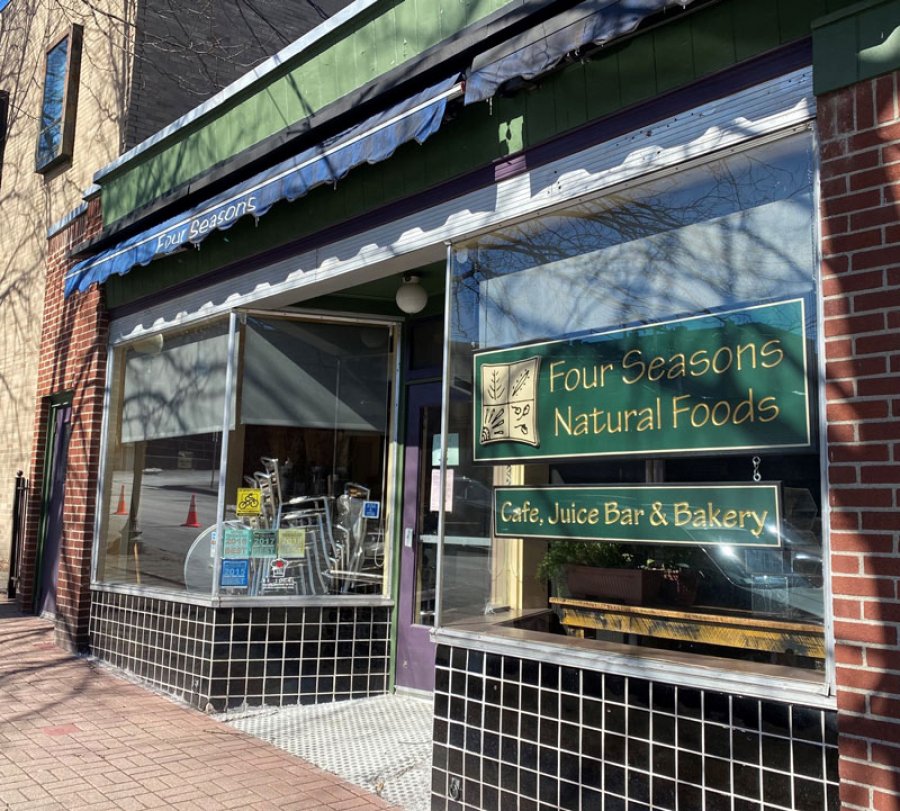
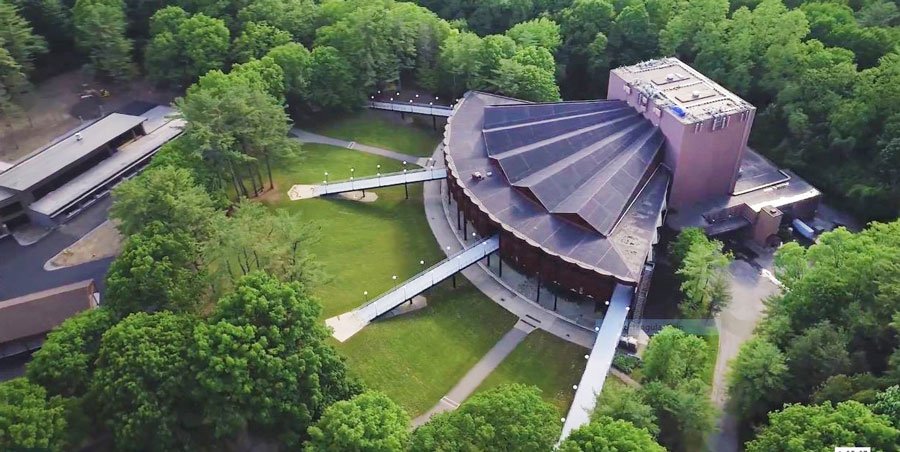

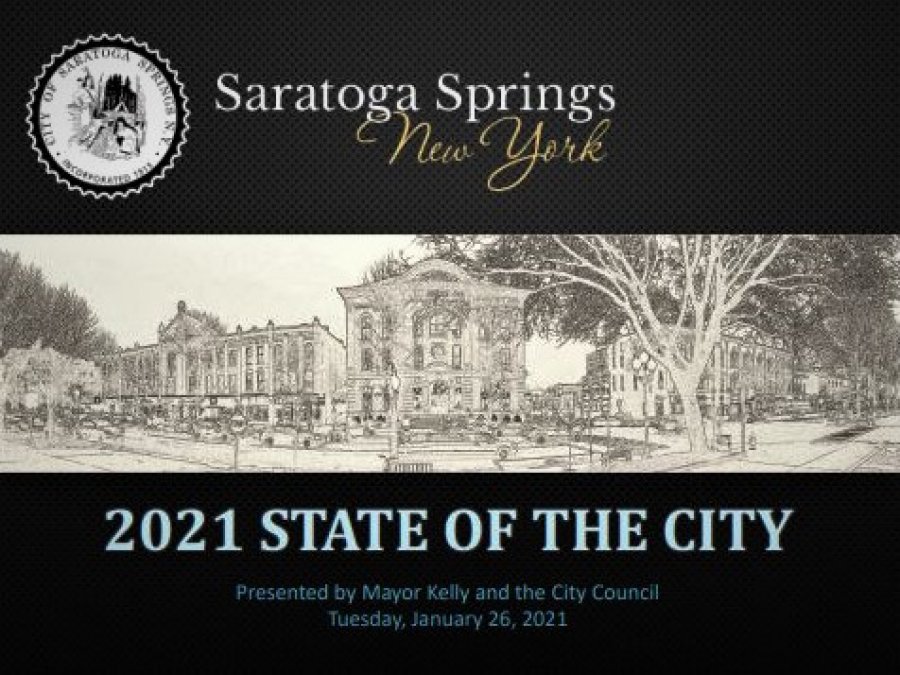

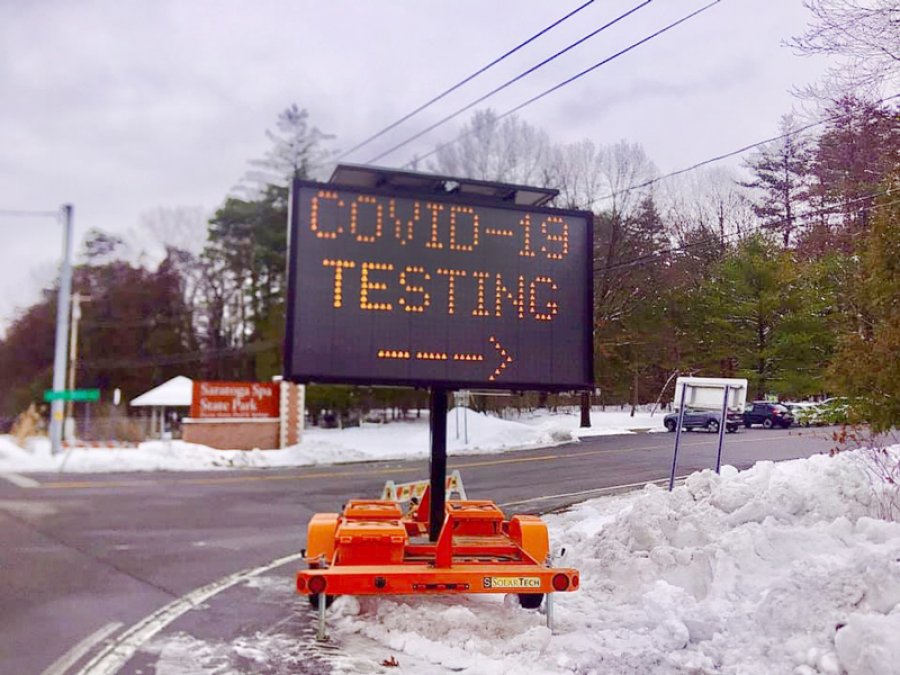
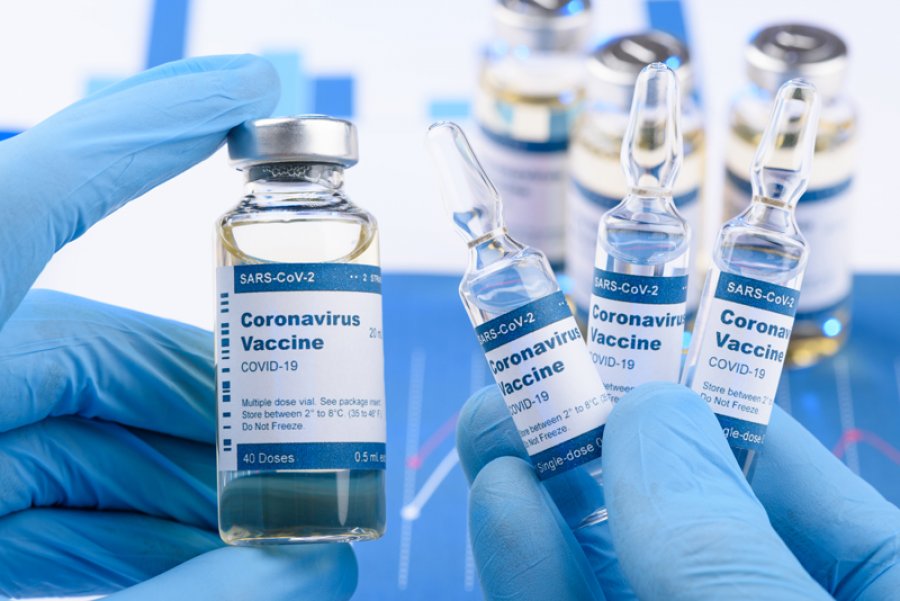
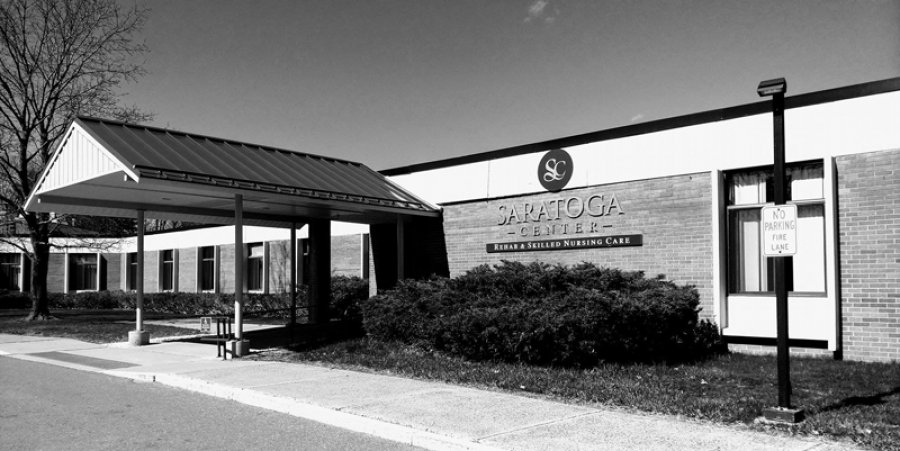

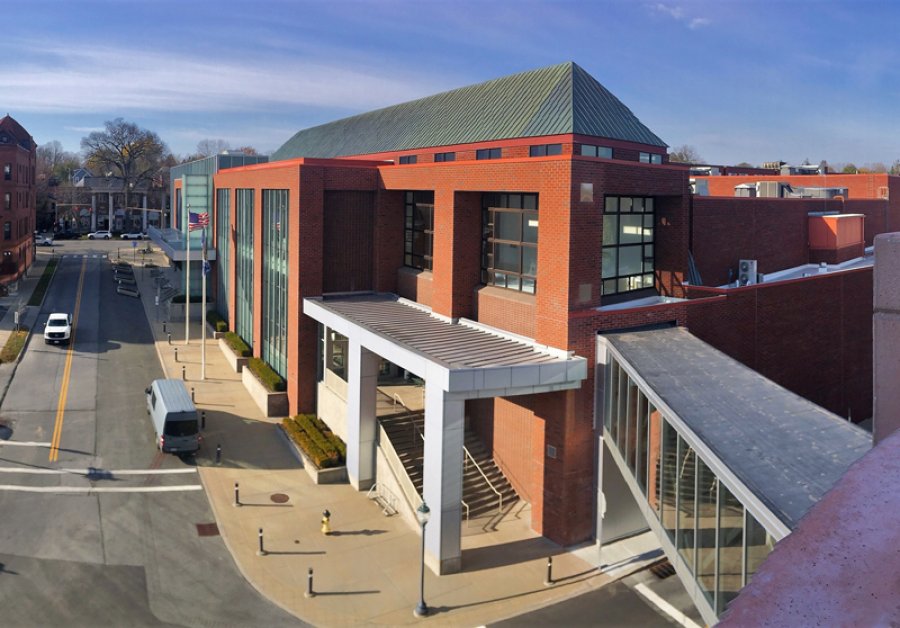


















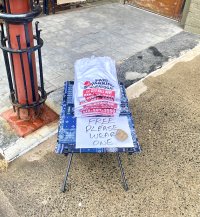

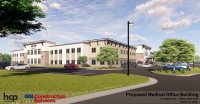
 How to resolve AdBlock issue?
How to resolve AdBlock issue? 









